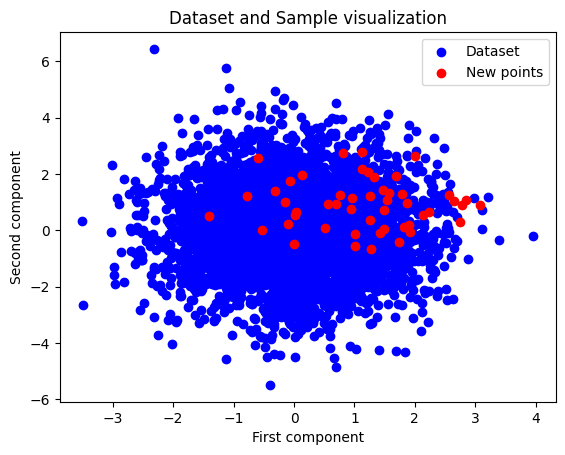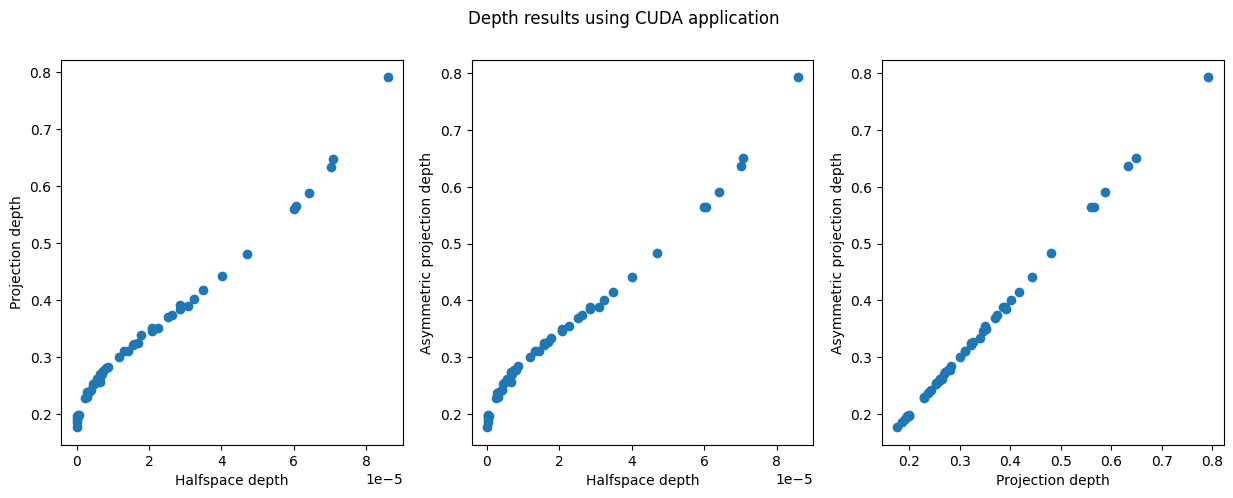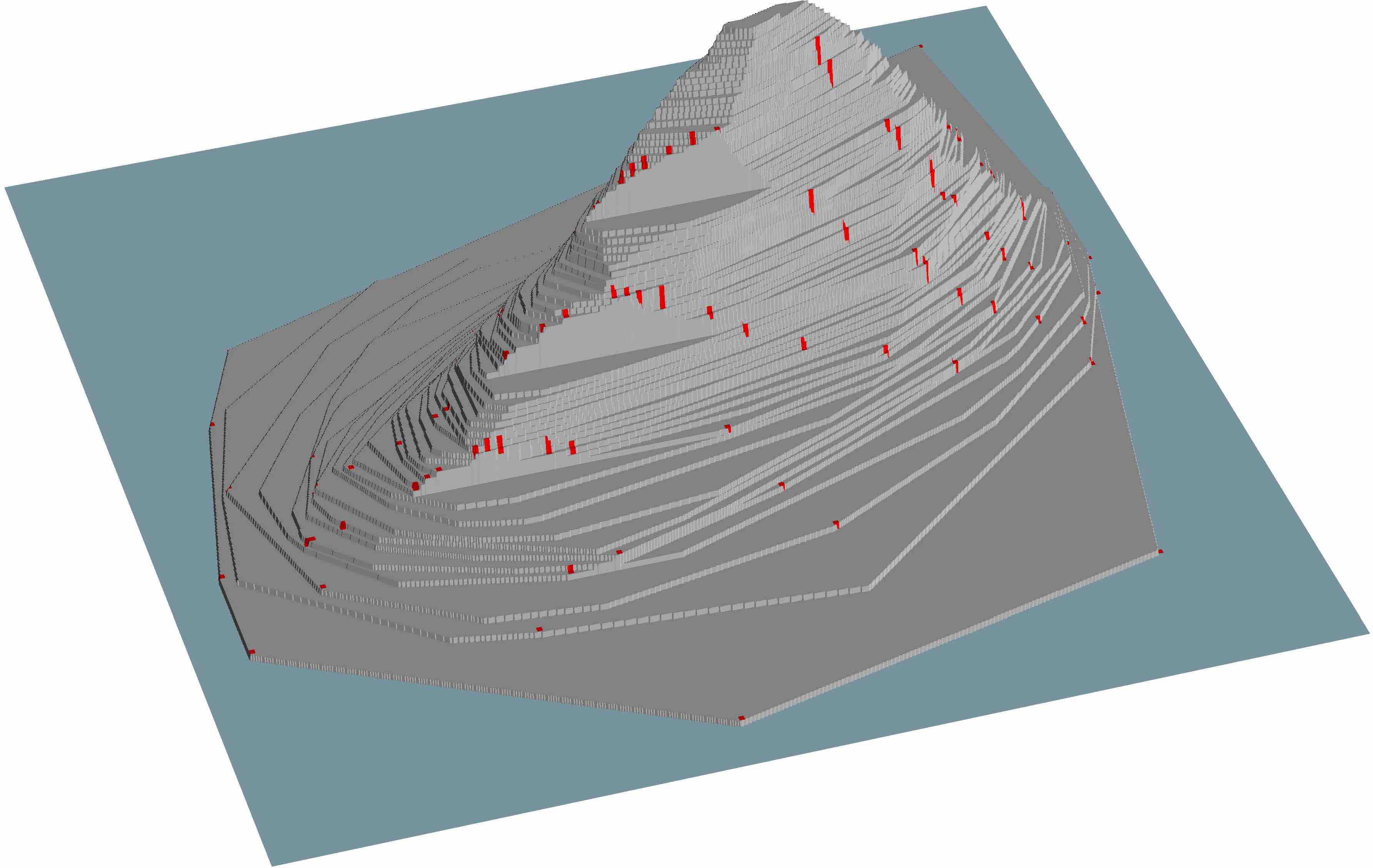Cuda application for halfspace, projection and asymmetric projection depth#
Sample usage of halfspace, projection and asymmetric projection depth computation. It will plot samples and dataset based on depth computation using Graphical processing units.
[1]:
from depth.model.DepthEucl import DepthEucl
import numpy as np
from matplotlib import pyplot as plt
[2]:
## Creating dataset and samples
np.random.seed(2801)
mat1=[[1, 0],[0, 2]]
mat2=[[1, 0],[0, 1]]
X = np.random.multivariate_normal([1,1], mat2, 50)
dataset = np.random.multivariate_normal([0,0], mat1, 5000)
## visualize points
fig=plt.figure()
plt.scatter(dataset[:,0],dataset[:,1], c="blue",label="Dataset")
plt.scatter(X[:,0],X[:,1], c="red",label="New points")
plt.xlabel("First component")
plt.ylabel("Second component")
plt.title("Dataset and Sample visualization")
plt.legend()
plt.show()

Create model and load dataset for depth computation
[3]:
model=DepthEucl().load_dataset(dataset,CUDA=True)
model.halfspace(X,exact=False,solver="refinedrandom",NRandom= 1000,n_refinements=10,CUDA=True) # Compute X Depth w.r.t. the dataset
model.projection(X,solver="refinedrandom",NRandom= 1000,n_refinements=10,CUDA=True) # Compute X Depth w.r.t. the dataset
model.aprojection(X,solver="refinedrandom",NRandom= 1000,n_refinements=10,CUDA=True) # Compute X Depth w.r.t. the dataset
plt.subplots(1,3,figsize=(15,5))
plt.subplot(1,3,1)
plt.scatter(model.halfspaceDepth,model.projectionDepth)
plt.xlabel("Halfspace depth")
plt.ylabel("Projection depth")
plt.subplot(1,3,2)
plt.scatter(model.halfspaceDepth,model.aprojectionDepth)
plt.xlabel("Halfspace depth")
plt.ylabel("Asymmetric projection depth")
plt.subplot(1,3,3)
plt.scatter(model.projectionDepth,model.aprojectionDepth)
plt.xlabel("Projection depth")
plt.ylabel("Asymmetric projection depth")
plt.suptitle("Depth results using CUDA application")
plt.show()

